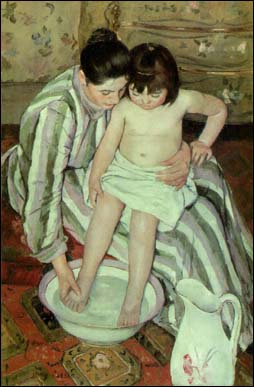Shape Notes
There are many Churches of Christ that still use shaped notation for their hymnals:
History of Shape Notes:
-
A capella singing (see * for exceptions). The more conservative congregations use songbooks with shaped notes (doh, re, mi, fa, sol, la, ti, each having a different shape).** Churches of Christ (south) split from the Christian Church/Disciples of Christ (north) during the American Civil War over instruments of music used in worship and denominational organization. ***
Originally all Protestant churches (with the possible exception of the Episcopal) in the American colonies worshiped a capella (no instruments of music). The first instruments of music introduced in the Congregational Churches in Massachusetts was from 1711 to 1740 in which the bass viol was the primary instrument, followed by other instruments. The organ wasn't adopted until the 1800s.
More rural, frontier and poorer churches held on to the a capella tradition, especially in the Appalachian communities that moved westward with the frontier.
-
The tonic sol-fa originated with Guido Monaco in the 11th century in Italy, a priest who took a Latin hymn that climbed the seven note scale one note at a time (similar to the the song, Do Re Mi, from the musical Sound of Music) and used the first syllable of each line to denote the seven notes: Ut, re, mi, fa, sol, and la. He also added the letters a, b, c, d, e, f and g to each note (adding the seventh note). This was called the Gamut scale at one time. It was used in various ways by people until the time of Sarah Ann Glover (1845) and John Curwen (1843) who popularized it as an easy way to learn music.
-
Shaped notes date back to the late 1700s as a help for people to learn to read music. These shapes started with only four shapes for the seven note scale: fa, sol, la, fa, sol, la, mi. There is a perfect 4 steps between fa and fa, sol and sol, la and la.

A hundred years later seven shapes (known as the Aikin system, 1846) became popular (do, re, mi, fa, sol, la, ti).

-
The conservative Churches of Christ, Primitive Baptist, Independent Fundamental Baptist, Free Will Baptist, the Holdeman Mennonites and a small Presbyterian group are among the last to still use shaped notes, (though some Southern Baptist, Methodist and Pentecostal churches have been known to use shape note songbooks--7 shapes).
-
Also Sacred Harp singers have clubs all over the United States to sing 200 year old songs a capella in four part harmony, using only 4 shapes for the notes. The Sacred Harp songs have Celtic or Appalachian harmonies (using open fifth chords, sometimes the Dorian scale), and are darker, more somber, more focused on sin, death and the afterlife, than gospel music from the 1880s on (e.g. Stamps Baxter music). There was a concerted effort to modernize the music and the message in hymns at this time, the original hymns of the 13 colonies comprising only a dozen tunes.
History of the Churches of Christ.
|

* There is a sizable instrumental Church of Christ group in the west, using instrumental music, associated with Midwestern School of Evangelism in Ottumwa, Iowa.
***There is also a sizable group in Australia called the Churches of Christ that are similar to the Independent Christian Church/Disciples of Christ in the USA (though there are many congregations in Australia that are the same as, and closely connected to, the a capella Churches of Christ in the USA.)
|


